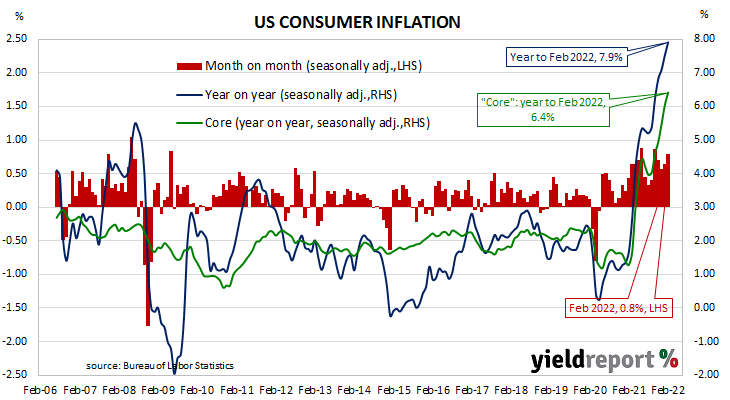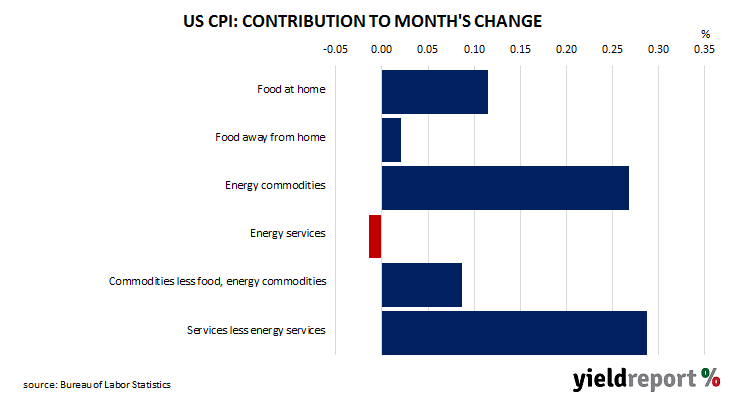Summary: US CPI up 0.8% in February, in line with expectations; “core” rate up 0.5%; inflationary pressures proving more persistent, expansive; Treasury yields up, rate rise expectations firm; commodities main driver of headline rise.
The annual rate of US inflation as measured by changes in the consumer price index (CPI) halved from nearly 3% in the period from July 2018 to February 2019. It then fluctuated in a range from 1.5% to 2.0% through 2019 before rising above 2.0% in the final months of that year. Substantially lower rates were reported from March 2020 to May 2020 and they remained below 2% until March this year. Rates has risen significantly since then.
The latest CPI figures released by the Bureau of Labor Statistics indicated seasonally-adjusted consumer prices increased by 0.8% on average in February. The result was in line with expectations but higher than January’s 0.6%. On a 12-month basis, the inflation rate accelerated from January’s reading of 7.5% to 7.9%.
“Headline” inflation is known to be volatile and so references are often made to “core” inflation for analytical purposes. Core inflation, a measure of inflation which strips out the more variable food and energy components of the index, increased by 0.5% on a seasonally-adjusted basis for the month. The rise was in line with expectations but slightly lower than January’s 0.6% increase. The annual growth rate increased from 6.0% to 6.4%.
“[The] net take-away is that US inflationary pressures are proving to be more persistent and expansive, increasing the pressure on the Fed to lift the funds rate and cool the economy,” said NAB currency strategist Rodrigo Catril.
US Treasury bond yields rose on the day. By the close of business, the 2-year Treasury yield had added 3bps to 1.70%, the 10-year yield had gained 5bps to 1.99% while the 30-year yield finished 6bps higher at 2.37%.
In terms of US Fed policy, expectations for a higher federal funds rate over the next 12 months firmed somewhat. At the close of business, March contracts implied an effective federal funds rate of 0.205%, 12bps higher than the current spot rate. June contracts implied 0.85% while March 2023 futures contracts implied an effective federal funds rate of 1.81%, 173bps above the spot rate.
The largest influence on headline results is often the change in fuel prices. “Energy commodities”, the segment which contains vehicle fuels, increased by 6.7%, adding 0.27 percentage points. However, prices of non-energy services, the segment which includes actual and implied rents, again had the largest effect, adding 0.29 percentage points after they increased by 0.5% on average.



